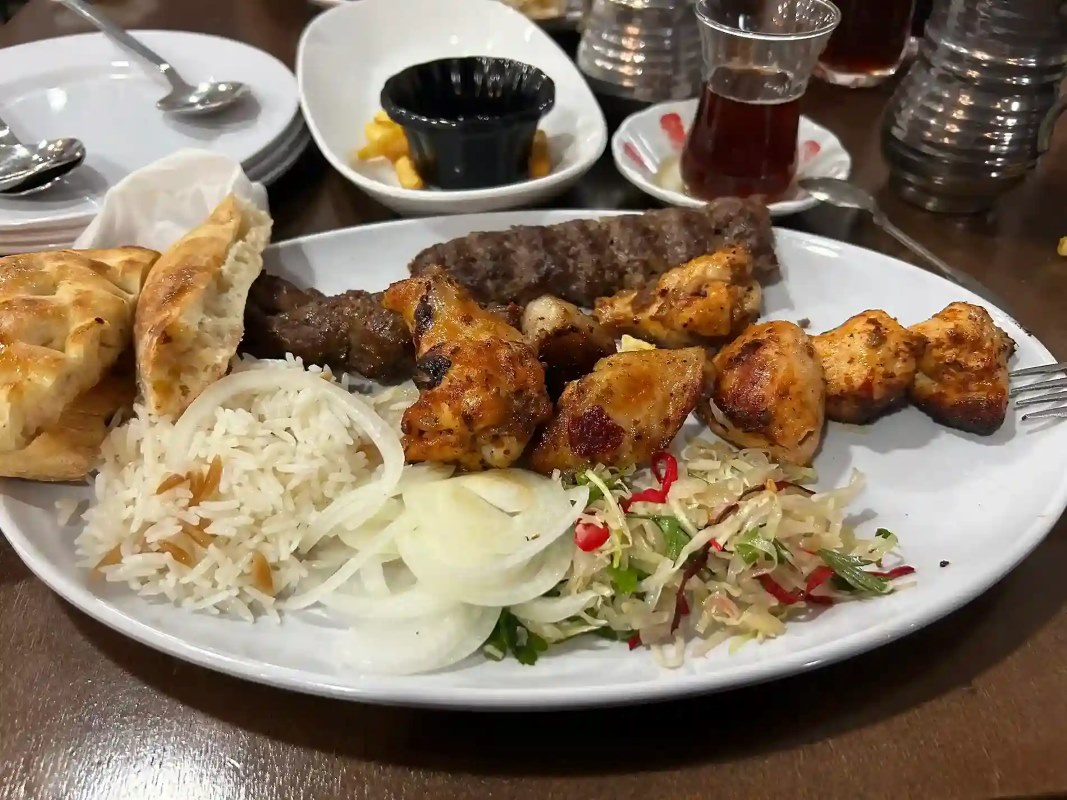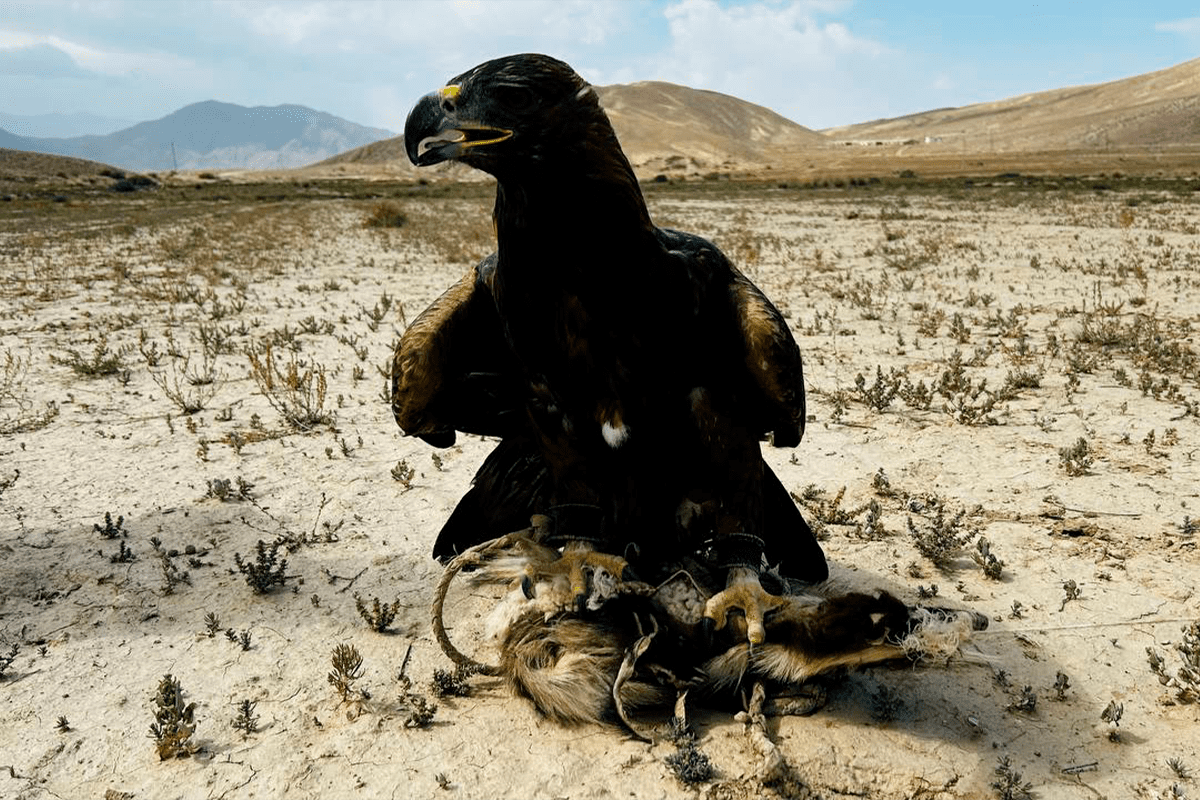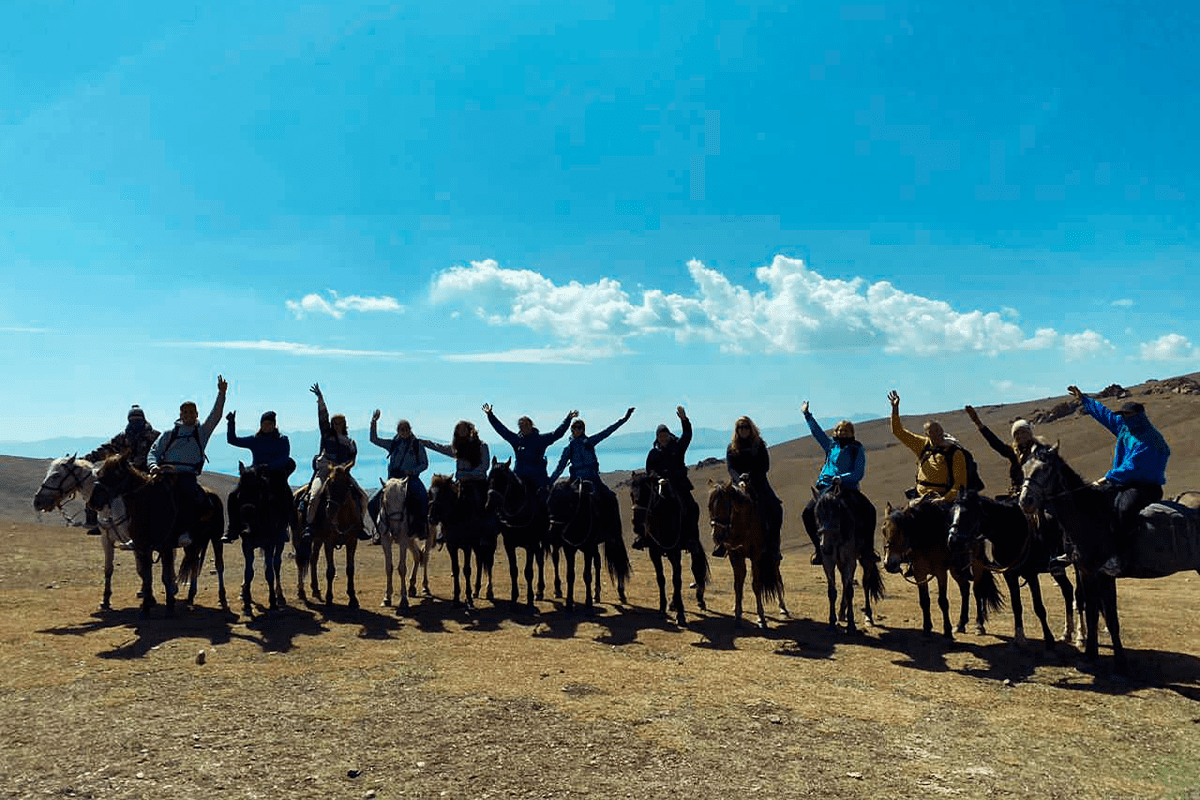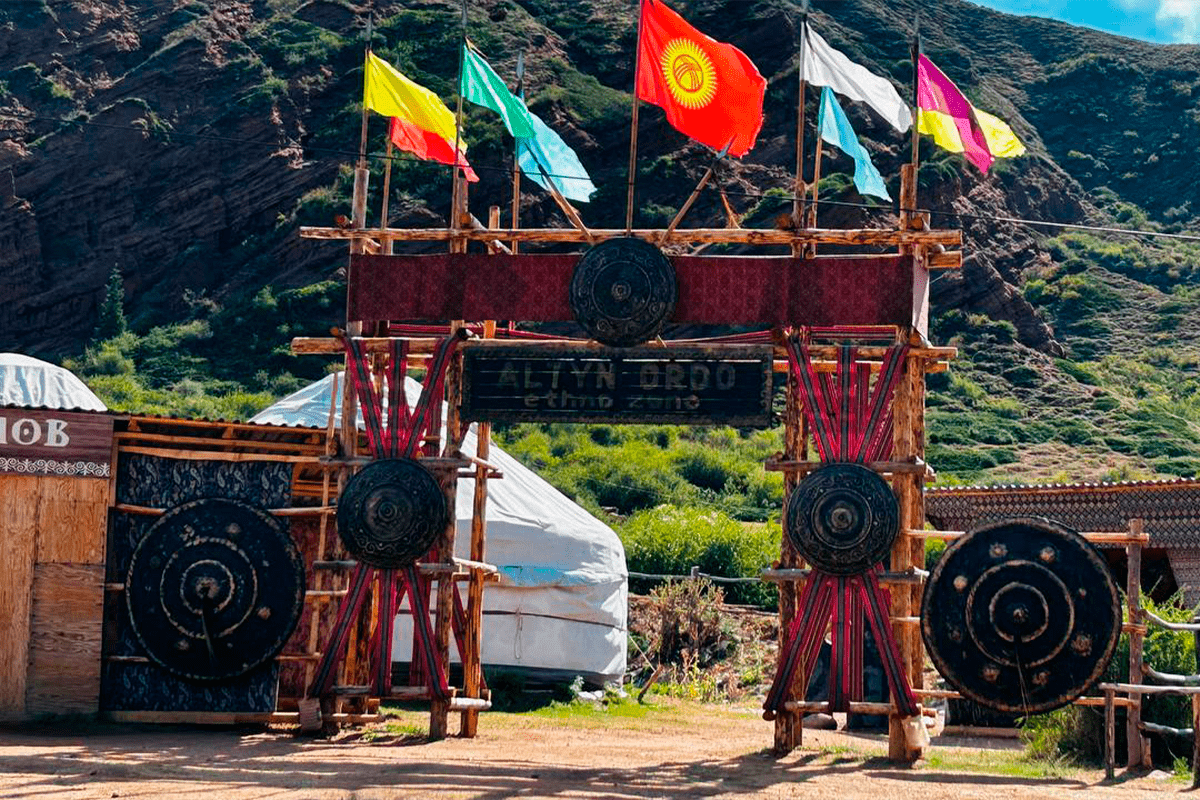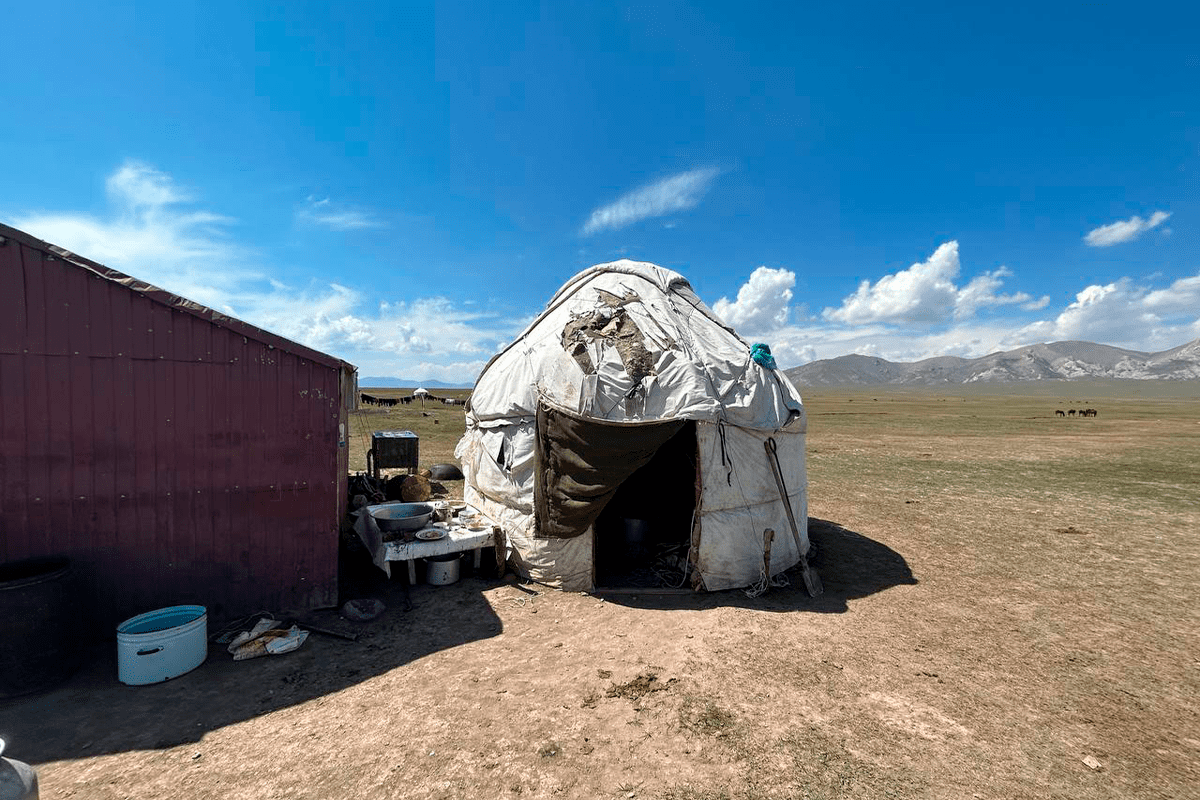Traditional Kyrgyz cuisine. Modern Kyrgyz cuisine has absorbed the traditions of nomadic ancestors and a variety of tastes of neighboring countries.
The patriarchal way of the Kyrgyz family with its strict hierarchy was most clearly manifested during meals. The place of honor was considered to be the place opposite the entrance to the yurt (dwelling). It was occupied by the eldest member of the family – the Aksakal. He gave way only when guests appeared. The sons sat to the right of the head of the family, the wife of the eldest son, known as Baibiche, sat to his left. The daughters sat next to him, and the daughters-in-law (daughters) sat next to him. The younger wife of the Aksakal was sitting by the boiler. She put the meat on a plate and passed it to the wife of the youngest son, and she, in turn, shared the food.
In the past, the main ingredients were meat and dairy products. Under the influence of other cuisines of the world, the number of dishes has increased significantly. Today, almost every region of Kyrgyzstan has its own gastronomic peculiarity. Karakol ashlyam fu (noodles with starch pieces) is considered the best not only in the country, but also in all regions after the collapse of the Soviet Union. Almost half of the residents of Osh are Uzbeks, so the most delicious pilaf, samsa and shish kebab are prepared here. In the city of Naryn – the best “besh-barmak”.
Kyrgyz cuisine is served for dastorkon. Dost” means “friend”, and “khan” means “ruler”. Dostarkan is a table where friends and guests gather, and the host or guest of honor sits at the head of the table.
Meat dishes of Kyrgyz cuisine
In Kyrgyzstan, lamb, horse meat and beef are preferred. Poultry and fish meat are not used in traditional cuisine.
Almost all holidays are served besh-barmak – a combination of boiled horse meat, thin dough and broth. Boiled diamond-shaped dough and fried meat or liver are served with vegetables.
Chuchuk is a horsemeat sausage made from fat under the ribs. Since it is a delicacy, it is usually served in two or three pieces, but in some regions a whole plate is placed in front of the guests of honor.
Boiled lamb intestines stuffed with minced meat, liver, blood, rice, flour and spices.
Kerchoo: lamb brisket cooked on coals; olobo: light, boiled in milk.
The festive dish is tash kordo. The recipe for cooking is as follows. The meat is marinated, placed on a special mount and baked in the oven. Before the appearance of the oven, the meat was put in a washed mutton stomach and placed in a pit lined with red-hot stones.
Zhaa boyrok is a steamed carcass of pickled lamb. Dymdama (dimdama, dimlama) is a stew of meat and vegetables.
In Kyrgyzstan, pilaf is a dish of rice, meat, onions, carrots, garlic and spices.
Shishkebab is a shish kebab made from lamb or beef liver. This dish has a long history. In modern Kyrgyz cuisine, it is also prepared from meat.
Kyrgyz soup
The national dish of Kyrgyzstan is the famous cold starch-based soup called Ashlyan-fu (ashlyan-fu), which originated from the Dungan people. Karakol ashlyan-fu (produced in Karakol, Kyrgyzstan) is considered the most delicious in the CIS countries.
Other soups include Gulazik, a fried soup made of meat and ground grains, and Shorpo, a fatty meat soup. Kyrgyz cuisine is also famous for milk soup – shurugan.
Gulchetai (kulchetai, chymchyma), a soup made of egg dough and vegetables in meat broth, and kesme, a noodle soup with meat, are also prepared here.
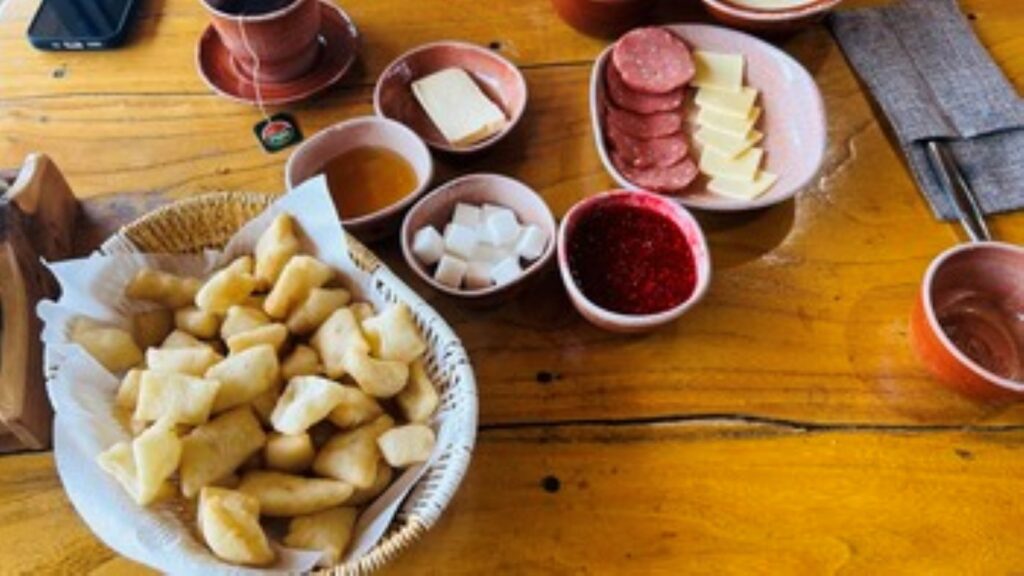
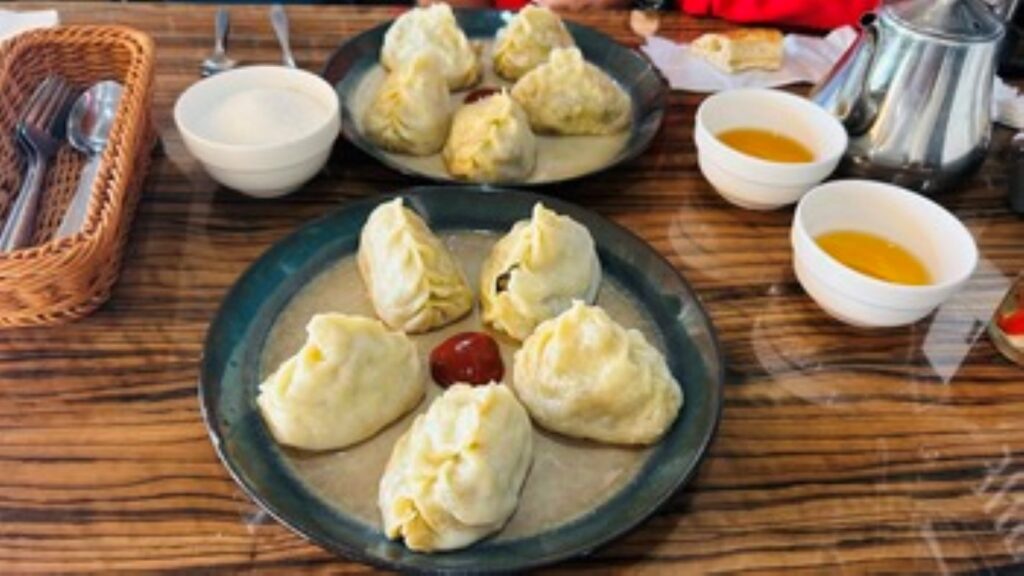
Kyrgyz dairy products
Kyrgyz people are very fond of milk and products based on it. Kyrgyzstan also exports dairy products to neighboring Central Asian countries and Russia.
On the table you can find yogurt “Zhurat” from sheep’s (less often goat’s) milk, cottage cheese “Ezhigey”, melted butter “Sarymai”, cottage cheese “Byshtak” from boiled milk and cheese “Pyshlak”, which does not harden.
Other well-known dairy products include kaymak, similar to sour cream, and krut, a dry ball of sour milk.
Kyrgyz bread
Kyrgyz dishes are always served with bread, the table is empty without it. In addition, there is a very wide range of bakery products.
Boorsoki is fried yeast dough in butter, nan is flat bread baked in a tandoor (clay oven). Zhupka is a layered flat bread, and tokochi is a flat bread made of yeast dough. Kemech is a flat bread made of sour dough; mai tokoch is a small flat bread, unleavened or sweet. Chabats and kattama are flat breads with layers of dough.
Kyrgyz dishes made of dough and meat
Oromo is a thinly rolled dough of large diameter with meat (or potato) filling, rolled into a roll and steamed.
Samsa is a meat pie baked in a tandoor (clay oven). The best samsa is prepared in Osh. In other regions, they have a triangular or square shape.
Manti with meat can be tasted in all oriental restaurants. This dish is steamed from ampang dough. In some regions of Kyrgyzstan, you can try yeast mantas.
Naryn Besh-barmak – thin noodles with finely chopped meat.
Hoshans are minced meat tortillas wrapped in dough and fried in oil.
Lagman – long noodles and meat fried with vegetables.
Kyrgyz sweets
Traditional Kyrgyz sweets are made from nuts, fruits and honey. The most famous are zhansak and balmaniz. Zhansak resembles candy and is made from nuts and honey with the addition of melted butter. Balmanazy is similar to kozinaki and consists of walnuts and honey. Sesame canteens are another kind of kozinaks, which are prepared from sesame seeds and sugar.
Sweet milk dish – umachi day ash. This is a flour tortilla cooked in milk and poured with melted butter.
Drinks in Kyrgyzstan
The Kyrgyz meal begins and ends with tea. In the south, they prefer to drink green tea, and in the north – black. In Issyk-Kul and Naryn, tea is drunk with fat milk and sugar.
Kyrgyz always add milk and salt.
In Kyrgyzstan, it was customary to add milk, salt and toasted flour or tokhana to tea. This tea was called kuurma. Nomads also loved ak tea or Kalmyk tea, which was brewed in a pot with milk, salt and pepper. In the south of Kyrgyzstan, green tea kek was popular, at the end of the XIX century. a samovar appeared in the north of Kyrgyzstan, and in the south – a metal kumugan. The northern Kyrgyz drank tea from their own cups, while the southern Kyrgyz alternated one or two cups in a circle. They also preferred koumiss (kymyz), a drink made from mare’s milk, and aylan, a fermented milk drink.
Sweet balls are made from honey, ginger root, cinnamon, cloves, black pepper and bay leaf.
Atkan tea: black tea with salt, sour cream, butter and milk.
Maksym is a drink made from barley, wheat, millet and corn. Chalap – ayran, diluted with water. Maksim is also called tan. When mixing maksym and charap, the drink is called aralash.
Bozo is made from millet, millet and yeast. Has a light alcohol content.
Zharma is a drink made from barley, also light in alcohol content.
What to eat during your stay in Kyrgyzstan is up to you. Some dishes may seem inedible or strange to tourists from distant countries. However, no one will be able to remain indifferent to Kyrgyz cuisine for sure.
Previously, Kyrgyz people added milk, salt and toasted flour or talkan to tea. This tea was called kuurma. Nomads also loved ak tea and Kalmyk tea. It was cooked in a pot with milk, bacon, salt and pepper. In the south of Kyrgyzstan, green tea kek was popular; at the end of the XIX century. in the north of Kyrgyzstan, water for tea was boiled in samovars that appeared here, and in the south metal kumugans were used. The northern Kyrgyz drank tea from their own cups, while the southern Kyrgyz alternated one or two cups in a circle.

